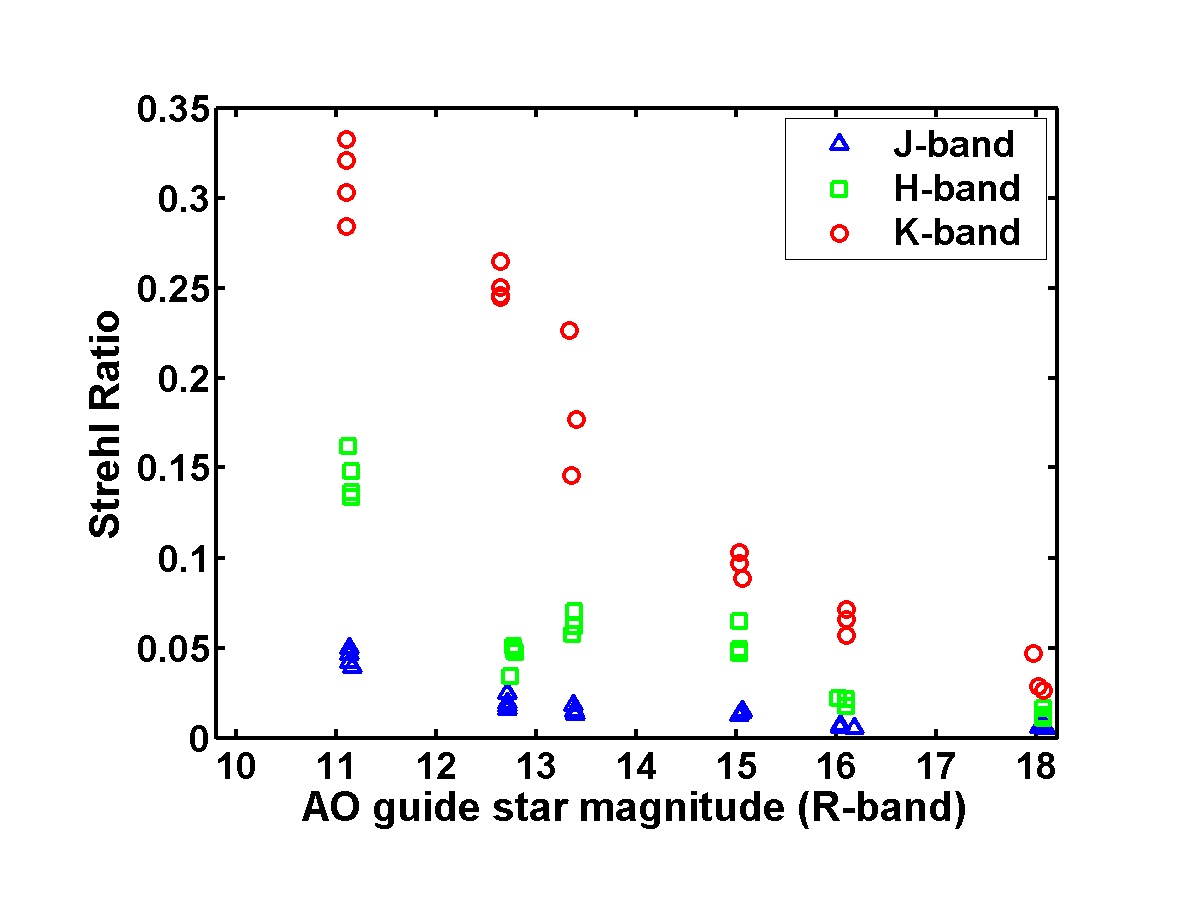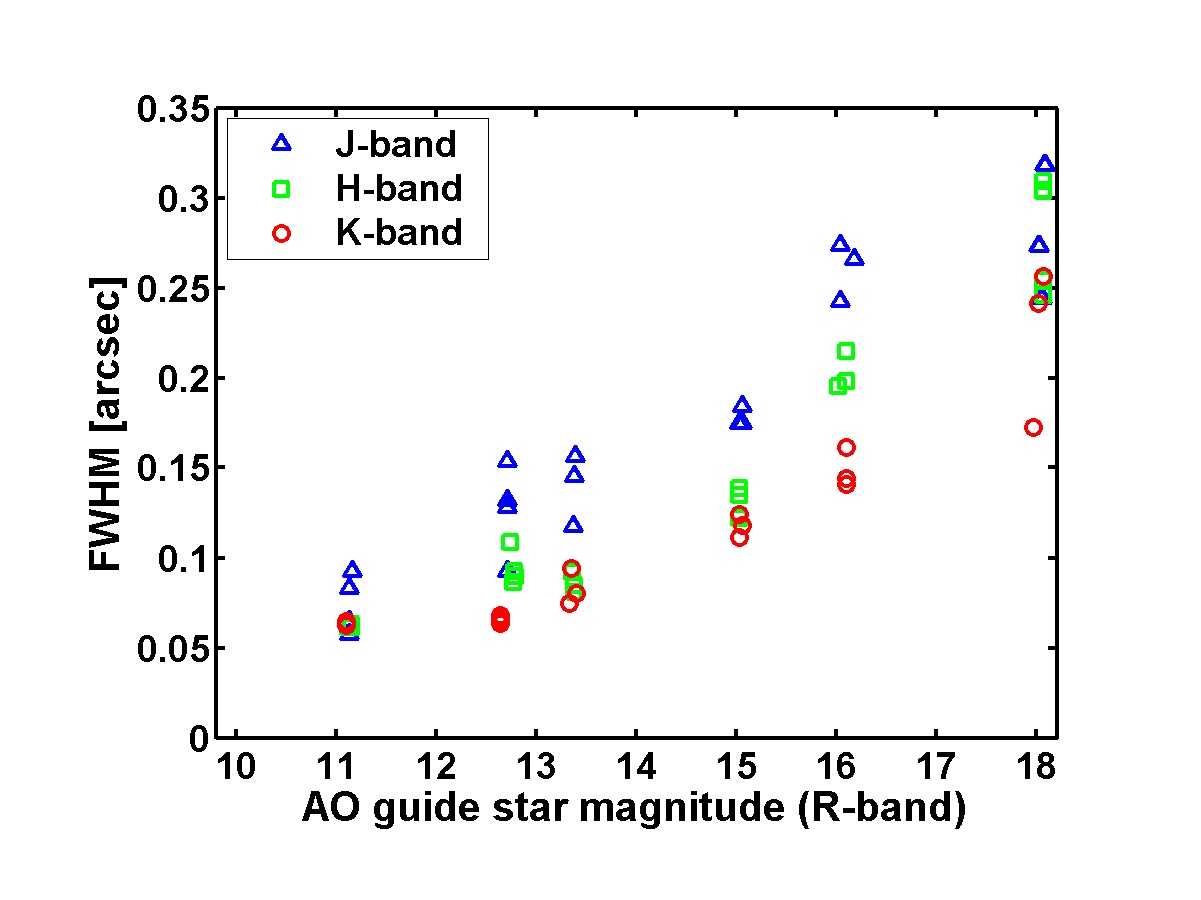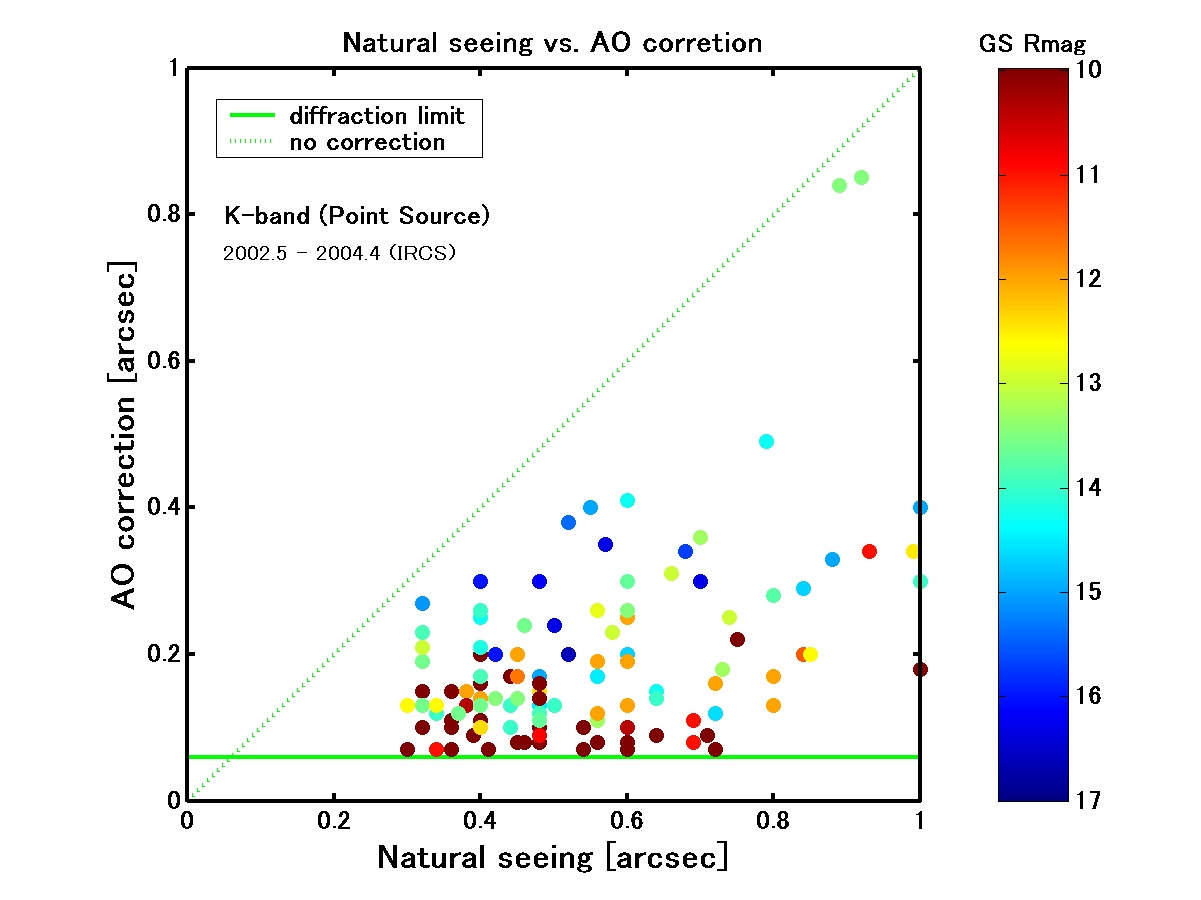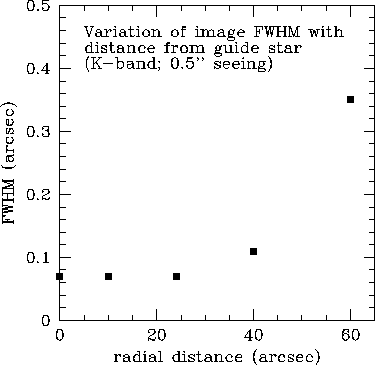Performance of Subaru AO36
The performance of AO is characterized by a Strehl ratio (a peak intensity normalized by that of a PSF without any turbulence) and FWHM of the PSF. These depend on the R-magnitude of the AO guide star, seeing, sky background and angular separation between the target and guide star. In general, performance is better with a brighter guide star, at a better seeing or longer wavelength.
On-source Strehl ratio and FWHM
The plots below show a Strehl ratio and FWHM as a function of AO guide star magnitude (seeing = 0''.4), and also FWHM as a function of seeing. These are quoted from Oya et al. (2004), SPIE Proc., 5490, 409. Seeing statistics at Subaru are shown here.



Isoplanatic field
The isoplanatic field has approximately 1' in diameter. The image quality degrades at distances of more than 30'' from the AO guide star (see figure below). This indicates that the height of the effective turbulent layer is less than 2 km. These values may vary from night to night, or even during a night.

Tip/tilt correction for KLM-band imaging
The correction using the tip/tilt mirror causes residuals of background subtraction for LM-band imaging, or K-band imaging with long integration. We thus fix the position of the tip/tilt mirror for these observations, and do not use it to compensate atmospheric turbulence. This may degrade the performance of AO correction. See this page for details.
updated on 9 March 2005